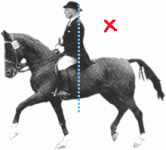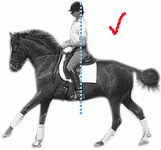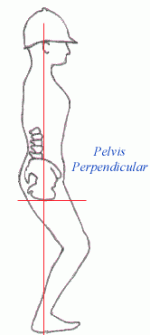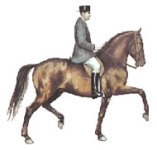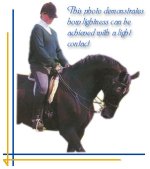N
Naghmeh Cavallaro
Guest
My experience from Sitting trot
salam dustan
Akharin matlabi ke dar ghesemate deresaj gozashtam Sitting Trott bude!Motmaen bashid ke in akharin ham nist;ama chera dar in ghesmat maks kardam?!Ta be hal shodeh baraye ye chizi ke koli zahmat keshidi va vaght va sarmayeh gozashti ye dafeh divaneh beshi va bekhahi ba ye lagad kharab koni?!baraye man dar in marhaleh az savari in hes pish oumad,bad az koli tamrinate mokhtalef,movafagh nemishodam ke be hich tarighi sitting trott beram?ki bavaresh mishe ke taghriban aksare harekathaye forhand ra mitunestam anjam bedam ama in harekate maskhareh baram ye ghul shodeh bud!hich ino eib nemidunam ke begam 4 mah dashtam say mikardam ama movafagh nemishodam,faghat ruye zin bala va payin miparidam be shedat va azolate kamaram ra hala spasm midadam!ajib bud vaghean,engar ghofl shodeh bud!ta inke ye ruze sarde zemestun ke khaili ham khasteh budam va az sare kar be savari rafteh budam shoru be tamrin kardam va ehsas kardam ke azoleh haye kamaram sang shodeh va aslan momken nist ke fekr konam mitunam enetaf dashteh basham,hahahahah chikar kardam!be moalemam goftam man digeh nemiam!engar ounam fahmideh bud,dar ebteda hichi nagoft.hafteye sakhti ra poshte sar gozashtam !akhe tasmim gerefteh budam ke digeh hala halaha naram donbal savari,ama delam baraye buye asbha va shihe hashun tang shodeh bud,hanuz muhaye Kevin be polouveram chasbideh bud.ta inke ye ruz yeki az dusthaye khubam ke ye asbe mehrabun va naz dareaz man davat kard ke beram be stableshun sar bezanam,lebase savari ham nabordeh budam,oun ruz khaili bikhial budam,ye dafeh be man goft mikhahi savari koni ba asbam behesh goftam na !goft chera?kholaseh jaryan ra barash goftam,begzarim be har zuri bud mano savar kard,rekabha ra dar avordim va arum shoru kard az ghadam be trott va man bikhial neshasteh budam va khaili ghashang sitting trott miraftam bedune ounke bedunam dustam goft pas to moshkelt chi bud?¨to ke bedune moshkel miri!kholaseh injuri bud ke man yad gereftam ,ama chera az in khatereh sohbat kardam,baraye inke ino begam:
dustam goft pas to moshkelt chi bud?¨to ke bedune moshkel miri!kholaseh injuri bud ke man yad gereftam ,ama chera az in khatereh sohbat kardam,baraye inke ino begam:
bazi oghat tamrine modam javab nemideh chon hamrah ba stress mishe va stress baes mishe ke shoma azolatetun ra monghabez konid va dar bazi harekat ha va be khosus in harekate oun natijeh ra nagirid¨
dar morede man in sadegh bud, shayad ageh hamun avayel baraye khodam in ghazieh ra bozorg nemikardam mitunestam relax basham va zudtar yad begiram.
faramush nakonim ke ma mikhahim savar kare khubi bashim va dar in rah bayad relax bashim va dar yadgiri sabur! ma dar mosabeghe nistim ke hamash fekr konim dir shodeh! Pas sharte aval ine ke Relax bashim , sharte dovom ine ke tamrinate ba ghayede dashteh bashim, va dar akhar sabur bashim khob dustan man az khodam shoru kardam ,az noghteye atfe savarkarim,sitting trott,dust daram shoma ha ham begid,montazere hastam,dar zemn posthaye badi ra donbal konid lotfan chon man tasmim daram az tamrinate deresaj inja modam matlab bezaram
salam dustan
Akharin matlabi ke dar ghesemate deresaj gozashtam Sitting Trott bude!Motmaen bashid ke in akharin ham nist;ama chera dar in ghesmat maks kardam?!Ta be hal shodeh baraye ye chizi ke koli zahmat keshidi va vaght va sarmayeh gozashti ye dafeh divaneh beshi va bekhahi ba ye lagad kharab koni?!baraye man dar in marhaleh az savari in hes pish oumad,bad az koli tamrinate mokhtalef,movafagh nemishodam ke be hich tarighi sitting trott beram?ki bavaresh mishe ke taghriban aksare harekathaye forhand ra mitunestam anjam bedam ama in harekate maskhareh baram ye ghul shodeh bud!hich ino eib nemidunam ke begam 4 mah dashtam say mikardam ama movafagh nemishodam,faghat ruye zin bala va payin miparidam be shedat va azolate kamaram ra hala spasm midadam!ajib bud vaghean,engar ghofl shodeh bud!ta inke ye ruze sarde zemestun ke khaili ham khasteh budam va az sare kar be savari rafteh budam shoru be tamrin kardam va ehsas kardam ke azoleh haye kamaram sang shodeh va aslan momken nist ke fekr konam mitunam enetaf dashteh basham,hahahahah chikar kardam!be moalemam goftam man digeh nemiam!engar ounam fahmideh bud,dar ebteda hichi nagoft.hafteye sakhti ra poshte sar gozashtam !akhe tasmim gerefteh budam ke digeh hala halaha naram donbal savari,ama delam baraye buye asbha va shihe hashun tang shodeh bud,hanuz muhaye Kevin be polouveram chasbideh bud.ta inke ye ruz yeki az dusthaye khubam ke ye asbe mehrabun va naz dareaz man davat kard ke beram be stableshun sar bezanam,lebase savari ham nabordeh budam,oun ruz khaili bikhial budam,ye dafeh be man goft mikhahi savari koni ba asbam behesh goftam na !goft chera?kholaseh jaryan ra barash goftam,begzarim be har zuri bud mano savar kard,rekabha ra dar avordim va arum shoru kard az ghadam be trott va man bikhial neshasteh budam va khaili ghashang sitting trott miraftam bedune ounke bedunam
bazi oghat tamrine modam javab nemideh chon hamrah ba stress mishe va stress baes mishe ke shoma azolatetun ra monghabez konid va dar bazi harekat ha va be khosus in harekate oun natijeh ra nagirid¨
dar morede man in sadegh bud, shayad ageh hamun avayel baraye khodam in ghazieh ra bozorg nemikardam mitunestam relax basham va zudtar yad begiram.
faramush nakonim ke ma mikhahim savar kare khubi bashim va dar in rah bayad relax bashim va dar yadgiri sabur! ma dar mosabeghe nistim ke hamash fekr konim dir shodeh! Pas sharte aval ine ke Relax bashim , sharte dovom ine ke tamrinate ba ghayede dashteh bashim, va dar akhar sabur bashim khob dustan man az khodam shoru kardam ,az noghteye atfe savarkarim,sitting trott,dust daram shoma ha ham begid,montazere hastam,dar zemn posthaye badi ra donbal konid lotfan chon man tasmim daram az tamrinate deresaj inja modam matlab bezaram

